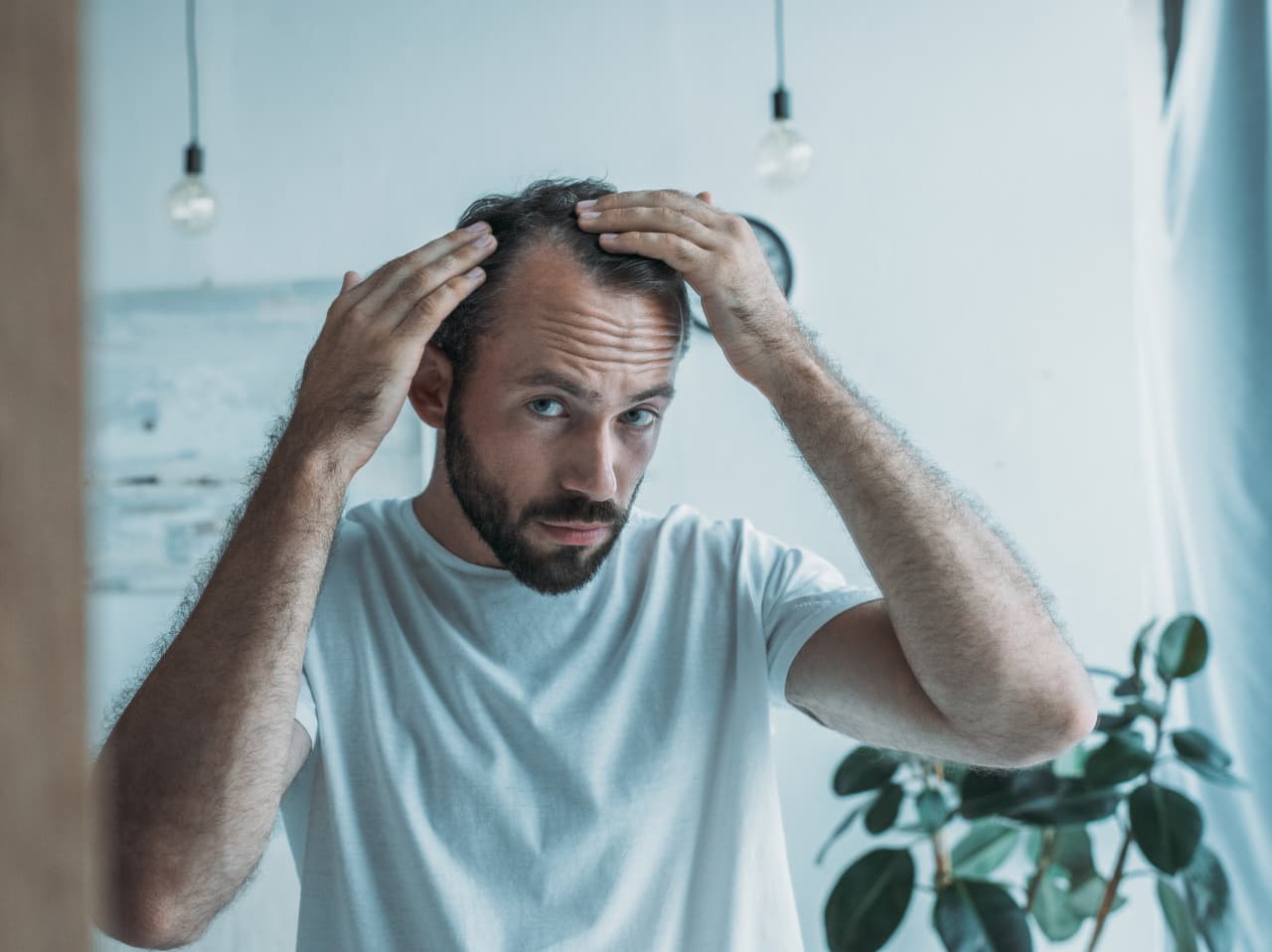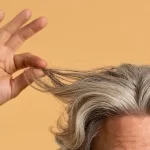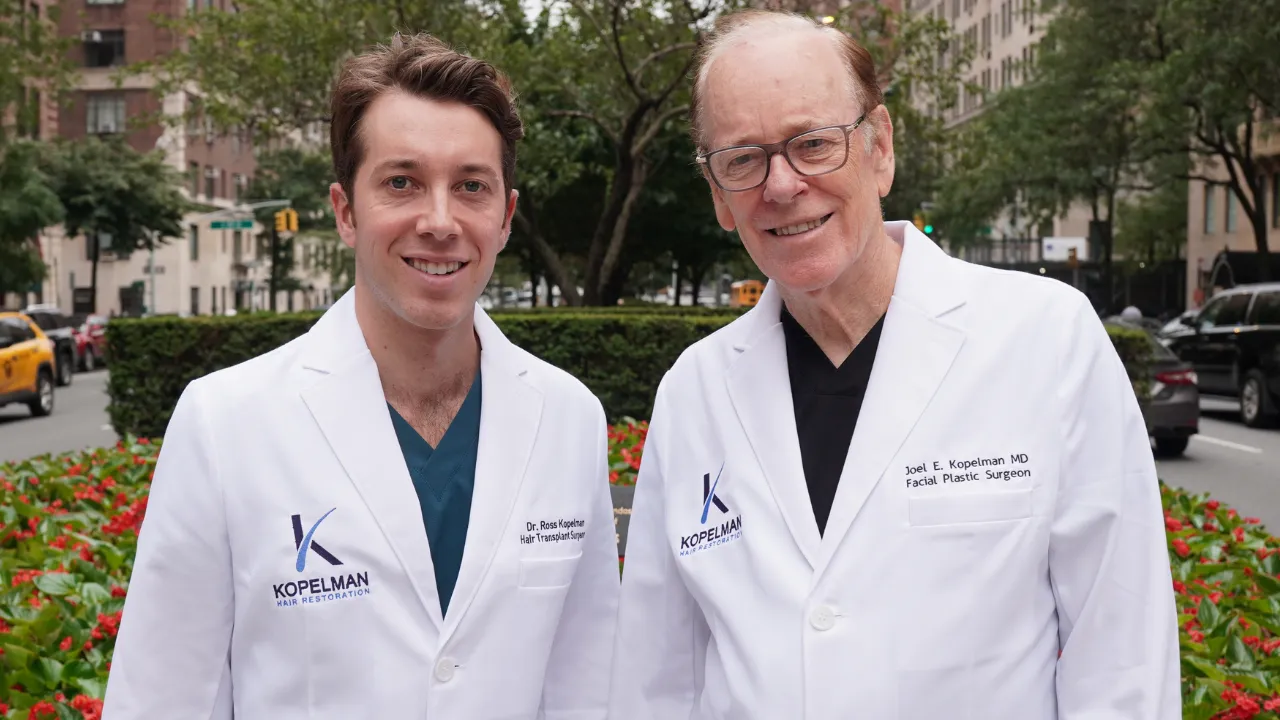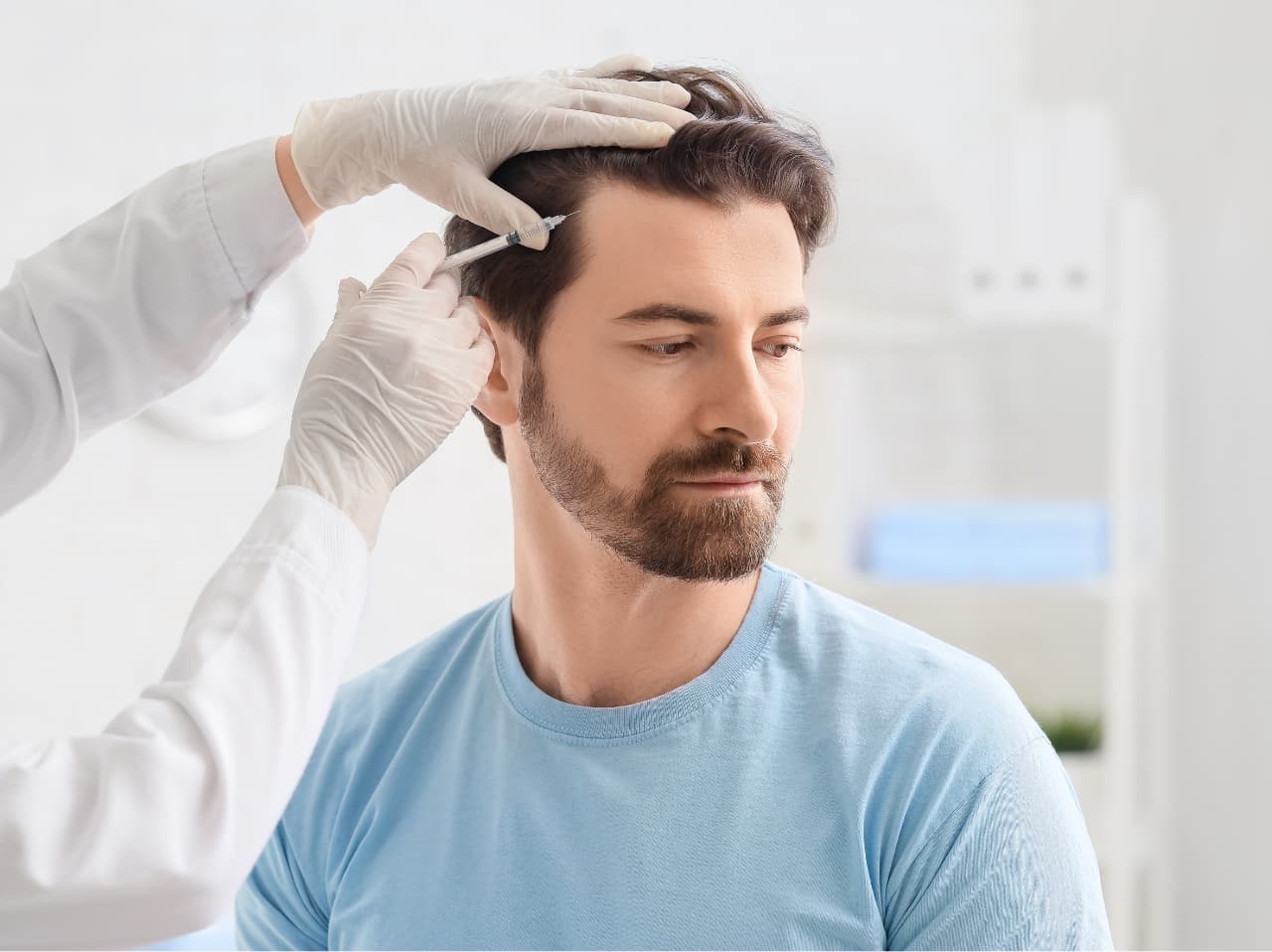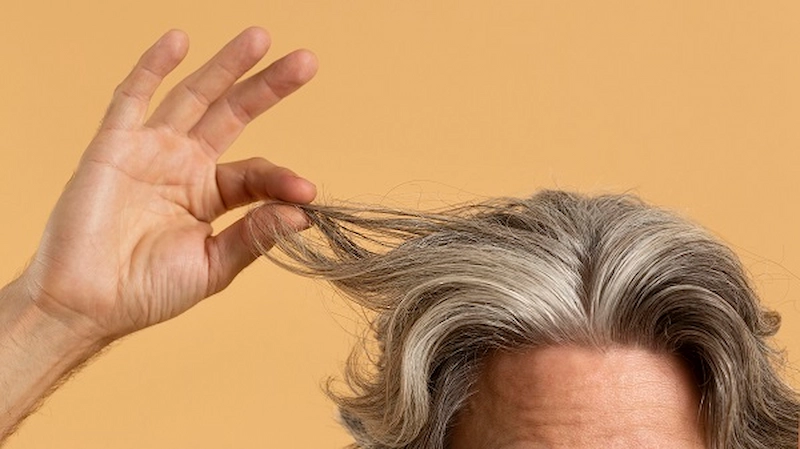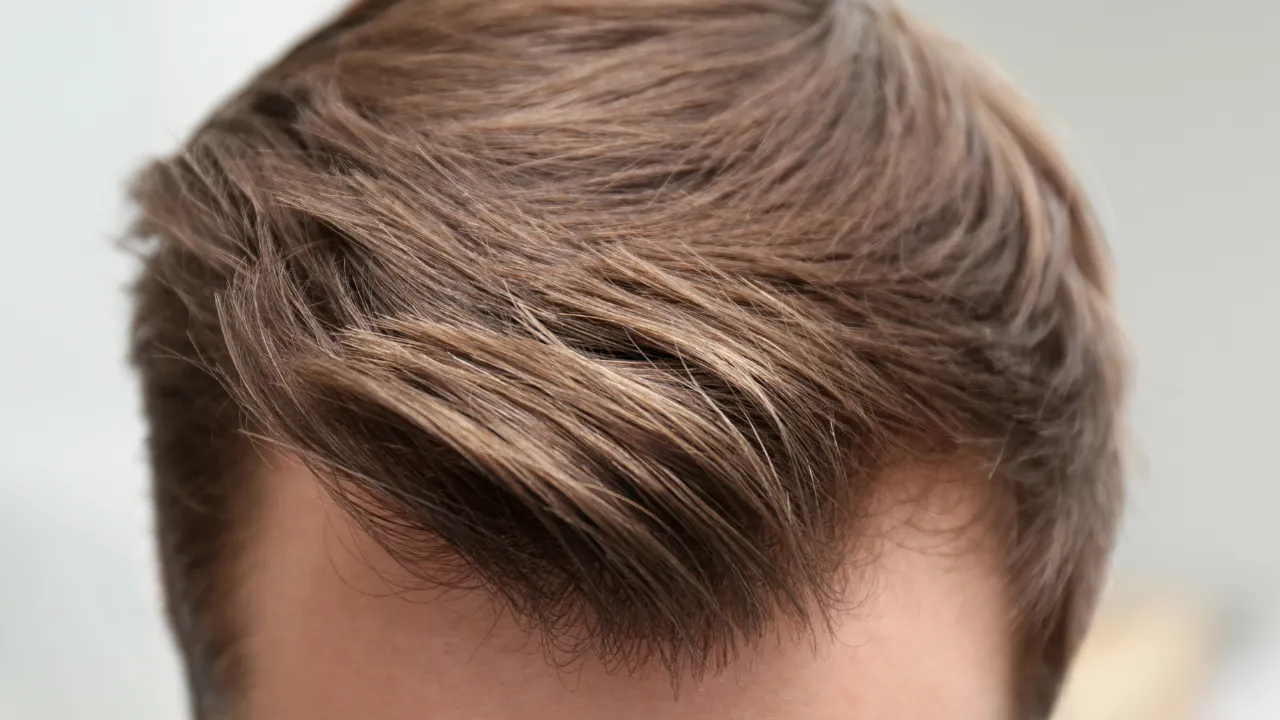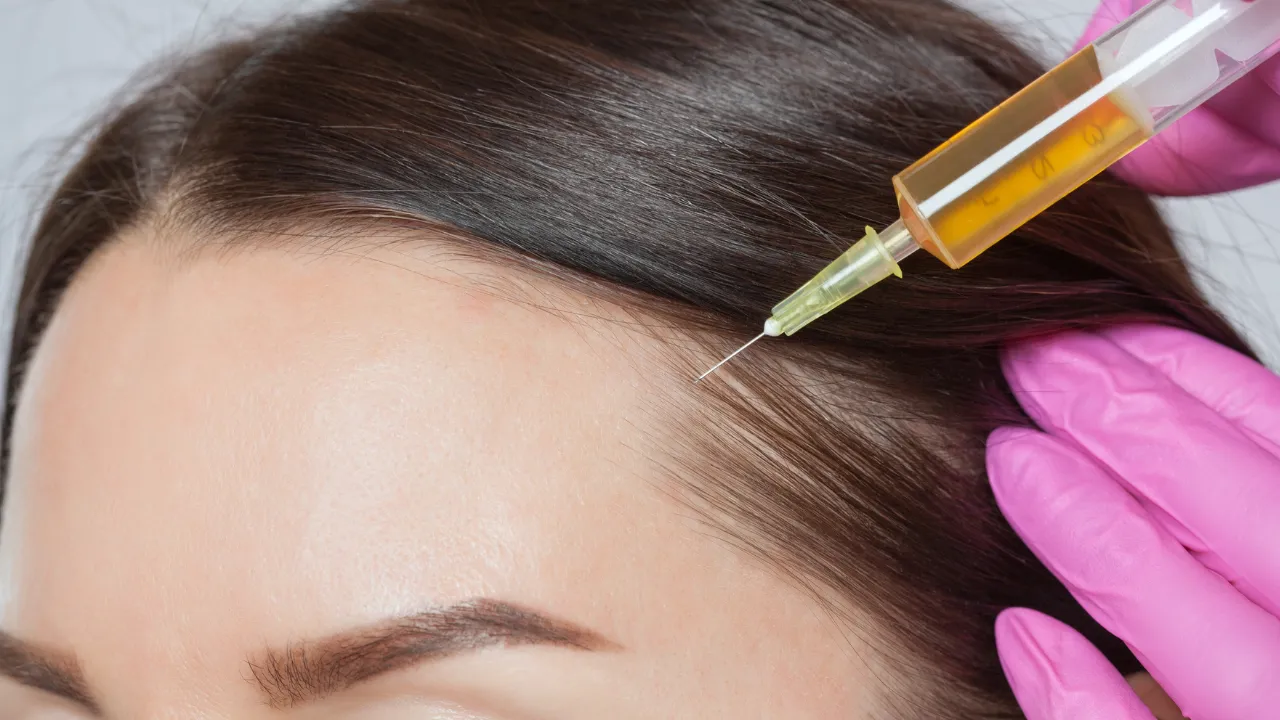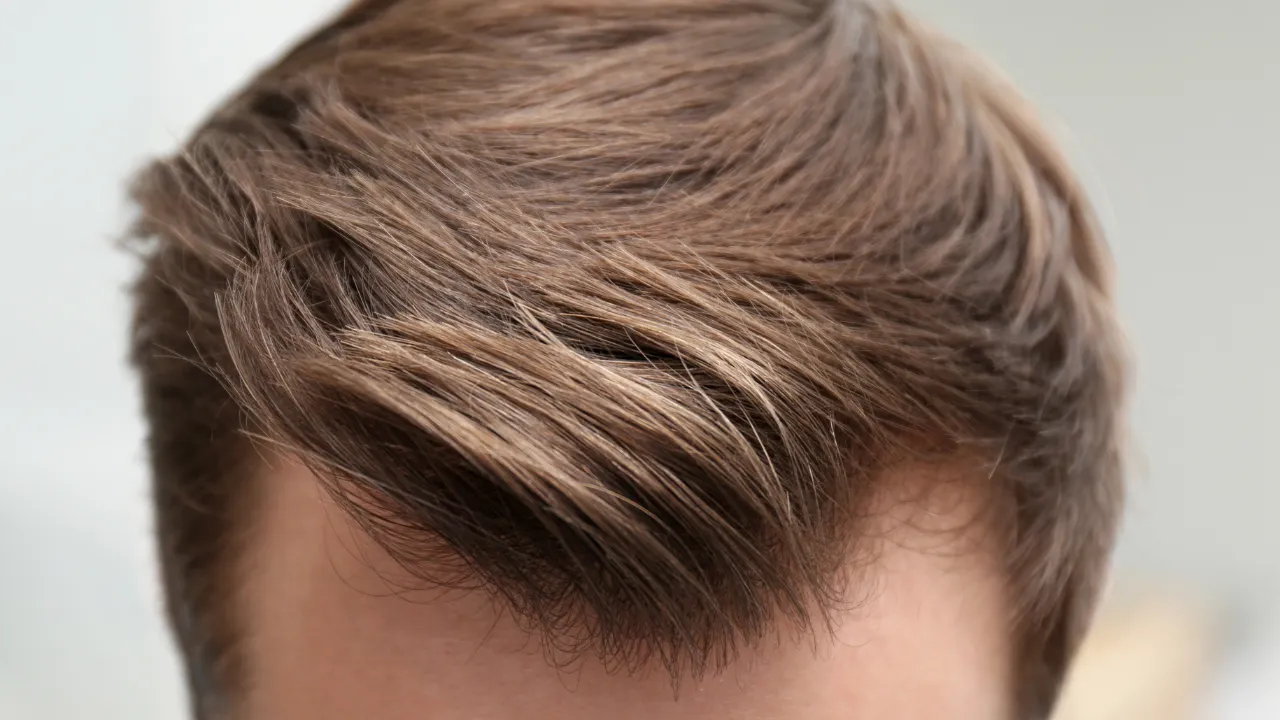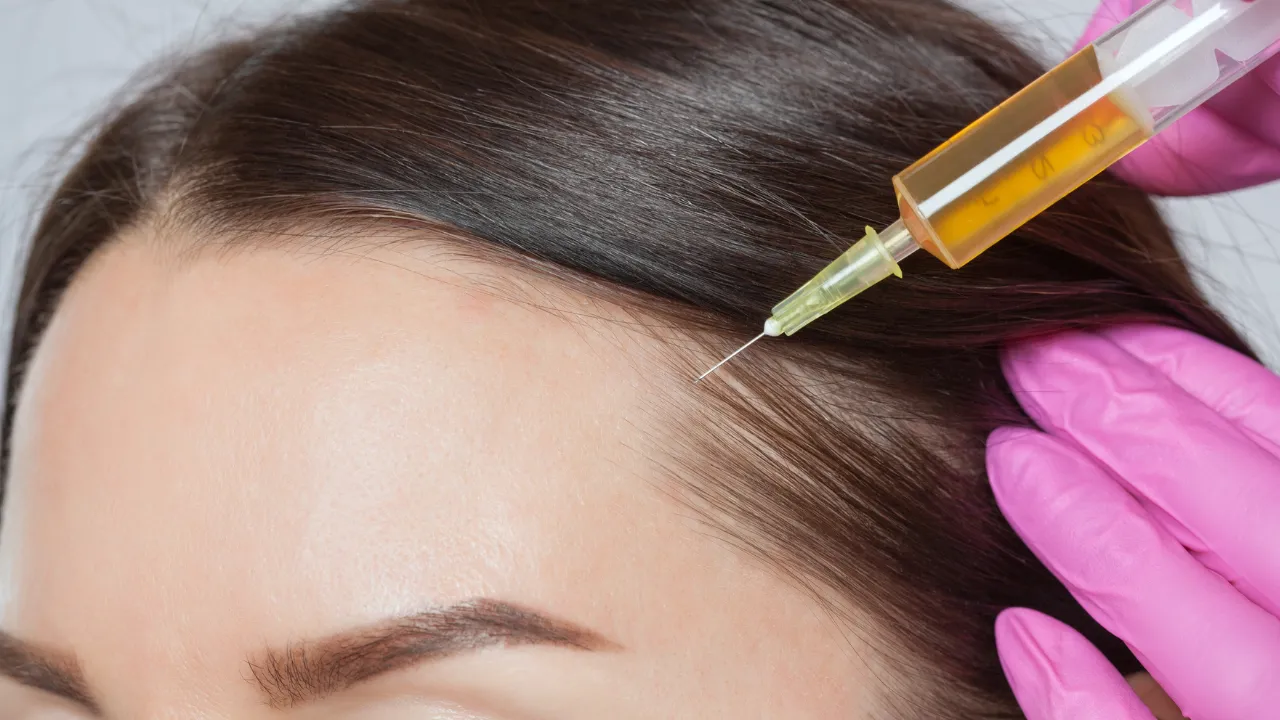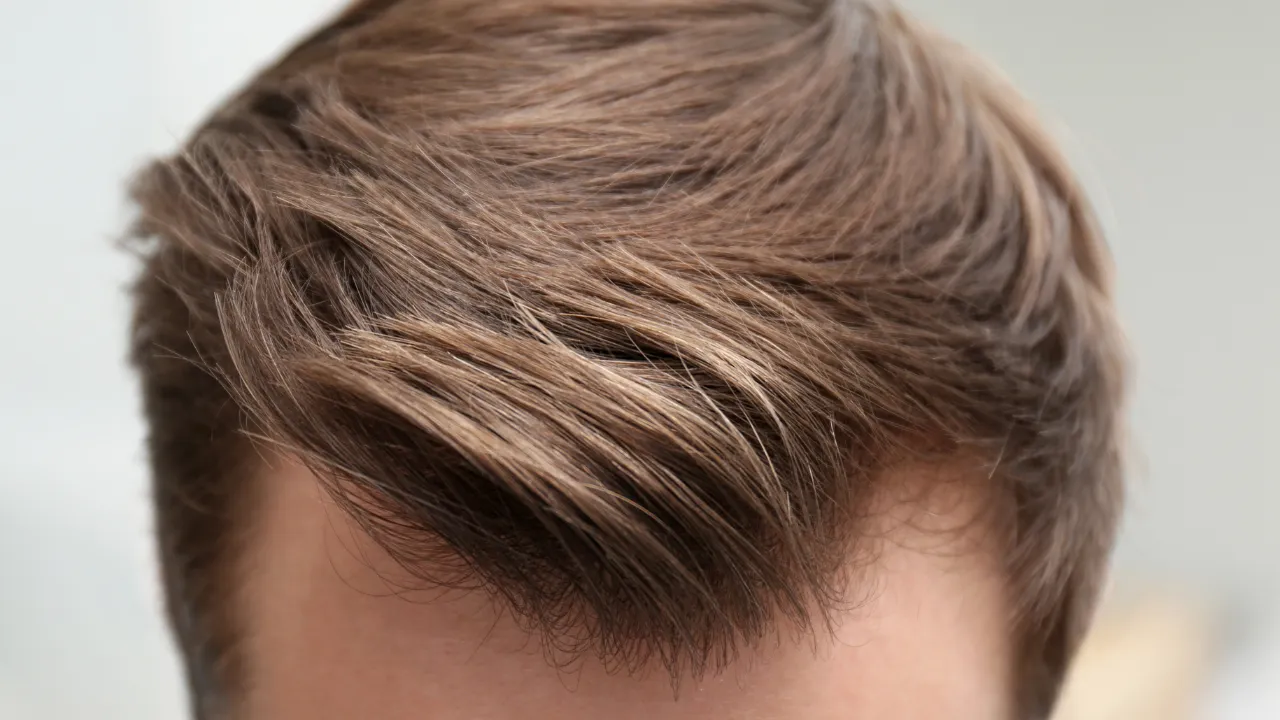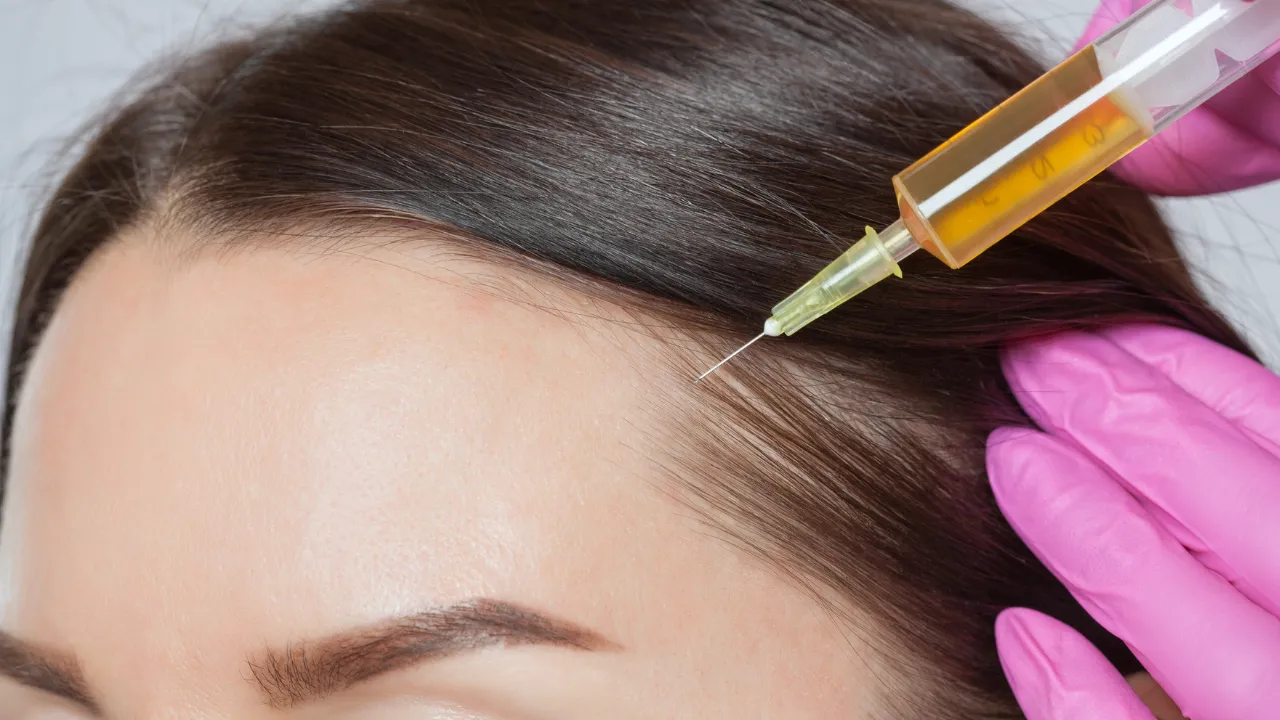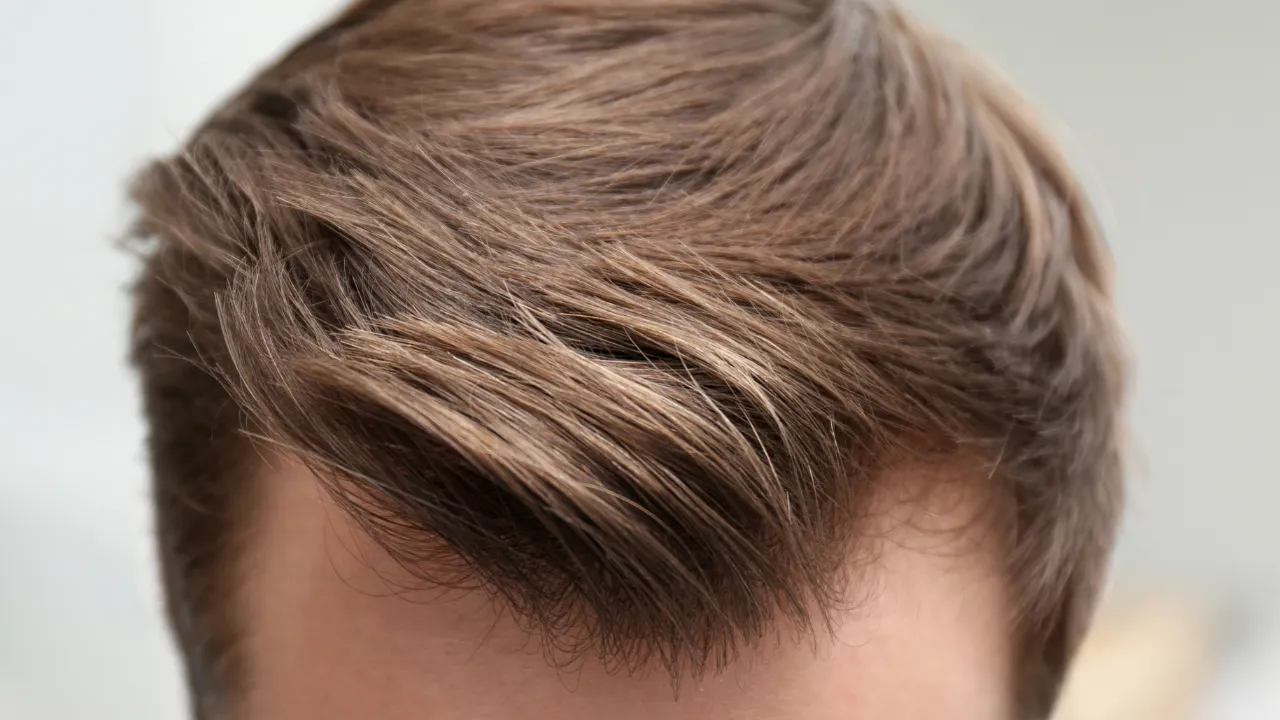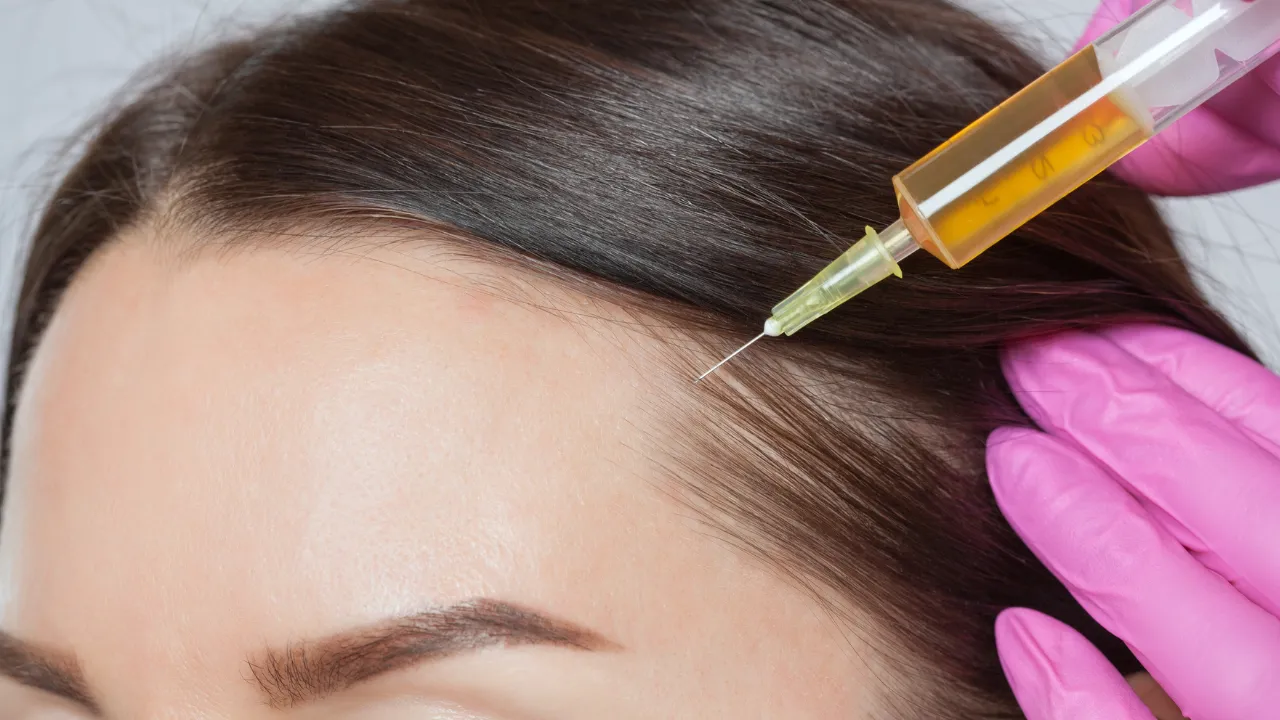Table of Contents
ToggleDiffuse alopecia causes widespread thinning across the scalp and can appear suddenly or gradually over time. Many patients feel confused because they do not see round bald patches or a receding hairline. At Kopelman Hair, we help patients understand why this type of shedding occurs and what they can do to restore healthier growth. With a clear diagnosis and a targeted plan, most people can improve density and regain confidence.
Key Takeaways
- Diffuse alopecia creates even thinning across the scalp, and early diagnosis is essential to identify the cause and prevent long term loss.
- This condition can develop from stress, hormonal changes, nutritional gaps, illness, medications, or autoimmune activity, and each cause requires a different plan.
- Most patients improve with a mix of medical treatments, lifestyle adjustments, and supportive care that targets inflammation, circulation, and follicle health.
- Effective options include Minoxidil, PRP therapy, laser therapy, nutritional support, and Treatment for alopecia areata when immune activity is present.
- Dr. Ross Kopelman and the team at Kopelman Hair use detailed testing and personalized treatment plans to help patients restore fullness and maintain long term scalp health.
What Diffuse Alopecia Means
Diffuse alopecia causes hair to thin evenly across the entire scalp. Unlike typical male or female pattern hair loss, it does not create defined patches or a visible hairline shift. Many patients first notice reduced volume or more scalp showing in bright light. These early signs are important because they can appear long before major thinning becomes obvious.
This type of hair loss affects the hair cycle rather than isolated follicles. When the body experiences stress or internal imbalance, more hairs enter the resting phase, which leads to heavier shedding. The process often begins months before symptoms appear. Understanding how the hair cycle works helps patients see why changes feel sudden even when triggers occurred earlier.
Diffuse hair loss can be temporary or long lasting depending on the cause. Some cases resolve on their own when the trigger fades. Others require structured treatment to restore healthy growth. A proper diagnosis determines which approach is most effective.
Common Causes of Diffuse Alopecia
Diffuse alopecia has many potential causes. Identifying the correct one is the first step in building a reliable treatment plan. Below are the most frequent triggers seen in clinical practice.
Stress and Emotional Pressure
Stress is a major contributor to sudden shedding. When the body increases cortisol levels, hair follicles shift into the resting phase. Three to four months later, shedding becomes noticeable. This pattern is known as telogen effluvium. With lifestyle changes and short term medical support, most cases improve.
Nutritional Deficiencies
Low iron, low vitamin D, and low B12 are common in patients with diffuse hair loss. These nutrients support growth, cell repair, and follicle health. Even minor deficiencies can disrupt the hair cycle. Blood testing is required to identify and correct these problems.
Hormonal Changes
Hormonal shifts can weaken the hair cycle. Thyroid disorders, pregnancy, postpartum changes, and menopause can all contribute to more shedding. Restoring balance often improves density.
Illness and Physical Stress
Illness, high fever, surgery, and infection can all trigger widespread thinning. The body focuses its energy on healing, which slows hair growth. Once the body recovers, hair often regrows over several months.
Medication Side Effects
Some medications cause shedding as a known side effect. These may include blood thinners, antidepressants, acne treatments, and hormone therapies. Adjusting medication with a doctor’s guidance can sometimes reverse the thinning.
Autoimmune Conditions
Diffuse alopecia may occur when the immune system targets hair follicles. In these cases, shedding appears evenly instead of forming round bald patches. When autoimmune activity is suspected, targeted therapies may help protect the follicles from further damage.
Diffuse Alopecia and Alopecia Areata
Diffuse alopecia can resemble the broader form of alopecia areata. In this version, the immune system affects large areas of the scalp instead of creating isolated spots. Patients may not realize an autoimmune process is involved because the thinning appears uniform.
Treatment for alopecia areata focuses on calming inflammation and protecting the follicles. Options include topical therapies, oral medications, and precise injections. Early treatment prevents further loss and supports better regrowth.
This connection is important because not every case of diffuse thinning is autoimmune. Accurate testing helps determine whether immune treatment is necessary.
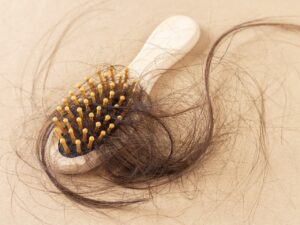
Recognizing Early Signs
The early signs of diffuse alopecia are easy to miss. Most patients notice several small changes before realizing something is wrong. These include:
- A thinner ponytail
- More visible scalp under bright light
- Increased shedding during brushing or showering
- Hair that feels flatter or lighter
- Reduced volume at the crown
Tracking these changes helps identify the issue sooner. At Kopelman Hair, we use high resolution scalp imaging to measure density and detect early thinning before major loss occurs.
How Diagnosis Works
A correct diagnosis is the foundation of effective treatment. Diffuse alopecia has many possible causes, so each patient requires a full evaluation. Dr. Ross Kopelman examines the scalp, reviews medical history, checks lifestyle patterns, and conducts detailed lab tests.
Blood tests can identify iron deficiency, thyroid disorders, vitamin shortages, and autoimmune activity. Scalp imaging allows us to determine whether follicles are shrinking or simply resting. When needed, more advanced tests rule out infection or inflammation.
Once we understand the cause, we design a plan tailored to the patient’s specific needs. This personalized approach increases the likelihood of long term success.
Medical Treatments for Diffuse Alopecia
There are several effective treatments for diffuse thinning. Each one targets a different part of the hair growth cycle. The most successful plans combine medical therapy with supportive care.
Topical Medications
Minoxidil increases blood flow and encourages follicles to remain in the growth phase. It is often the first treatment recommended for diffuse hair loss. Many patients see improvement after several months of consistent use.
Oral Supplements
If blood tests show nutritional issues, targeted supplements may be recommended. Iron, vitamin D, zinc, and B vitamins often support stronger regrowth. All recommendations are based on testing, not guesswork.
Hormonal Treatment
Correcting thyroid disorders or other hormonal imbalances can restore growth. Adjusting birth control or stabilizing hormones is sometimes part of the treatment plan. Each change is made under medical supervision.
Low Level Laser Therapy
Laser light stimulates tissue repair and increases circulation. It supports long term follicle health and is helpful for patients with ongoing thinning.
PRP Therapy
Platelet Rich Plasma uses the patient’s own growth factors to support follicles. PRP improves density in many cases and works well alongside other treatments. It is a natural and safe option with minimal downtime.
Treatment for Alopecia Areata
If diffuse thinning is related to immune activity, targeted therapy is needed. Corticosteroid injections, topical immunomodulators, or oral medications may help calm inflammation.
Lifestyle and Daily Care
Lifestyle choices can support or hinder recovery. Hair responds well to healthy routines and consistent care.
- Eat protein rich meals
- Take recommended supplements based on testing
- Reduce stress with sleep, exercise, and relaxation
- Avoid tight hairstyles and harsh chemicals
- Limit heat styling when possible
These habits support long term growth and make medical treatments more effective.
Expected Timeline for Improvement
Hair growth occurs in slow cycles. Most patients notice reduced shedding within two to three months. Visible thickening may take three to six months. Full results often require a year or longer. Progress depends on the cause and the patient’s overall health.
Follow up visits allow Dr. Ross Kopelman to adjust the treatment plan. This ensures steady improvement and prevents further loss.
Emotional Impact and Patient Support
Diffuse alopecia can affect confidence and daily comfort. Many patients feel anxious when shedding increases or when scalp visibility becomes noticeable. Understanding the cause helps reduce stress and encourages action instead of fear.
Kopelman Hair offers medical and emotional support throughout the process. Our goal is to help patients feel informed and supported at every step. With expert care and a personalized plan, most people regain volume and confidence over time.



